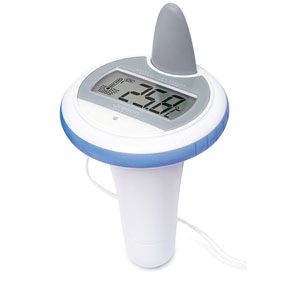Automation of the solar heating circuit of the pool
published: 01/07/08, 14:47
Hello
I would like to automate the solar heating circuit of the pool (the pool is currently 31 °!) by closing the circuit when the pool is sufficiently hot (28 ° max).
I installed a solar carpet which takes water at the outlet of the filter with return to the inlet of the pump. It works very well. With manual valves at the inlet and at the outlet to isolate the heating circuit when too hot or too cold or winter bleed. I also put "in preventive" a non-return valve at the entrance of the solar heating circuit.
To automate this, I had thought of replacing the manual valves by two solenoid valves (Rainbird PGA 100 + transformer 24V) controlled by carrier current via a PC and a water temperature probe (Oregon scientific RF type) and a temperature probe d 'air (idem). Interesting but expensive and complicated.
Wouldn't it be simpler to simply put a thermostatic valve at the inlet of my solar heating circuit ==> which will close the solar heating circuit when the pool water is for example at 28 ° and therefore to no longer heat the water in the swimming pool.
Much simpler, cheaper, no energy consumption.
Your opinion ?
Will the valve have sufficient flow?
Is it chlorine resistant?
Anyone already done it?
Thank you for your informed opinions.
I would like to automate the solar heating circuit of the pool (the pool is currently 31 °!) by closing the circuit when the pool is sufficiently hot (28 ° max).
I installed a solar carpet which takes water at the outlet of the filter with return to the inlet of the pump. It works very well. With manual valves at the inlet and at the outlet to isolate the heating circuit when too hot or too cold or winter bleed. I also put "in preventive" a non-return valve at the entrance of the solar heating circuit.
To automate this, I had thought of replacing the manual valves by two solenoid valves (Rainbird PGA 100 + transformer 24V) controlled by carrier current via a PC and a water temperature probe (Oregon scientific RF type) and a temperature probe d 'air (idem). Interesting but expensive and complicated.
Wouldn't it be simpler to simply put a thermostatic valve at the inlet of my solar heating circuit ==> which will close the solar heating circuit when the pool water is for example at 28 ° and therefore to no longer heat the water in the swimming pool.
Much simpler, cheaper, no energy consumption.
Your opinion ?
Will the valve have sufficient flow?
Is it chlorine resistant?
Anyone already done it?
Thank you for your informed opinions.
